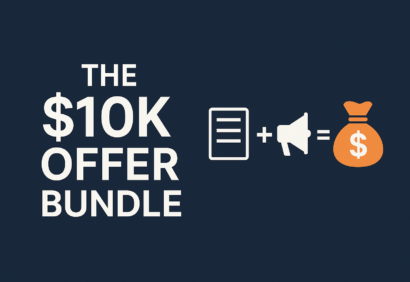Provide me some basic information about you and your business,
I'll review your details and get right back to you.

Learn how to negotiate better vendor terms in 9 easy steps, improving savings and building strong business relationships.
Want to save money and build stronger vendor relationships? Here’s how you can negotiate better terms with vendors in 9 straightforward steps:
To negotiate effectively with vendors, start with solid research.
Understand current pricing by analyzing market trends. Gather data on:
Don’t forget to include extra costs like shipping, handling, and import duties, as these impact the total price.
Define your pricing goals with these benchmarks:
Take into account factors like market conditions, order volume, seasonal changes, and the perks of long-term contracts. Use past transactions to confirm your pricing strategy.
Look at your previous purchases to spot patterns. Focus on:
Strengthen your vendor negotiations by understanding and quantifying your business’s value. Clear metrics can help you present a solid case.
Identify and measure key factors that highlight your importance to the vendor:
These insights can help you approach negotiations with confidence and clarity.
Establishing good relationships with vendors can lead to better terms and more productive, meaningful discussions.
Clear, direct communication is essential. Whenever possible, opt for face-to-face or video meetings instead of relying only on emails. This helps build rapport and reduces the chances of misunderstandings.
Here are some key tips for effective communication:
Understanding your vendor’s business goals can help you align negotiations for mutual success. Identifying shared objectives can make collaboration smoother and more productive:
| Area of Alignment | Your Goal | Vendor’s Goal | Shared Advantage |
|---|---|---|---|
| Order Volume | Lower unit costs | Steady revenue | Long-term agreements |
| Payment Terms | Better cash flow | On-time payments | Flexible schedules |
| Product Quality | Meet standards | Prove reliability | Quality assurance programs |
Recognizing these shared interests allows you to propose solutions that work for both sides.
Shape your negotiation requests in ways that benefit both you and the vendor:
Once you’ve built a good relationship with the vendor, it’s time to present your case thoughtfully.
Outline your specific business goals:
For instance, say, "We aim to reduce costs by 15%", instead of vague statements like "Can we get a better price?"
Use relevant numbers to strengthen your position:
| Data Type | Metrics to Share |
|---|---|
| Purchase History | Total spend over the last 12 months |
| Order Trends | Growth rate in recent quarters |
| Market Analysis | Competitor pricing in the current market |
| Volume Projections | Forecasted increases in future orders |
Frame your requests as opportunities for mutual benefit rather than making demands. Show how these changes can help both sides:
"We see an opportunity to strengthen our partnership by aligning our cost structure with current market trends."
Pair your requests with positive aspects of the relationship to keep the discussion productive. This clear, data-driven, and cooperative approach sets the stage for evaluating vendor responses in the next step.
After making your request, pay close attention to the vendor’s response to uncover opportunities for negotiation.
Identify the vendor’s key concerns by focusing on these areas:
| Focus Area | What It Reveals | Negotiation Opportunity |
|---|---|---|
| Cash Flow | Frequent mention of payment terms | Offer quicker payments for better rates |
| Volume | Talks about minimum order sizes | Suggest bulk purchase commitments |
| Long-term Growth | References future business plans | Negotiate multi-year agreements |
| Operational Costs | Highlights shipping or handling | Explore consolidating deliveries or adjusting schedules |
These clues can guide you in asking targeted questions and steering the conversation.
If something is unclear or concerning, ask direct questions to dig deeper:
These questions can help clarify the vendor’s position and uncover areas for compromise.
Watch for signs that the vendor might be open to adjustments:
Focus on areas where the vendor seems willing to collaborate. For example, if they won’t budge on price but offer volume discounts, shift the discussion to quantity. If timing is a concern, explore whether adjusting delivery schedules could lead to better terms.
Strategic pauses can also encourage the vendor to make counteroffers.
Once you have a solid grasp of the vendor’s priorities, think about proposing deal structures that work well for both sides.
Consider offering long-term, volume-based contracts. Be upfront about your order quantities and payment history to show you’re dependable. This helps build trust and demonstrates your commitment.
Explore payment plans that align with your cash flow needs while supporting the vendor’s operations. Options could include advance payments, splitting large purchases into installments, or arranging annual prepayment plans. These approaches can make payments more manageable for both parties.
Combine related products or services into bundles. For example, you could offer cross-category packages, integrated service options, or seasonal bundles. This strategy not only helps you save on costs but also strengthens your working relationship with the vendor.
Use practical strategies to negotiate better pricing while keeping vendor relationships strong. These approaches build on your research and the connections you’ve already established.
Adjust your initial offer based on your price target plan. Start with a well-researched, lower offer to leave room for negotiation. For instance, if market data shows similar vendors charging $50,000 for an annual service contract and your target is $45,000, you might open with $40,000.
A strong opening price should:
Always prepare an alternative to maintain your leverage. Research other vendors’ pricing and capabilities before entering negotiations. Keep this information private but ready – it can boost your confidence if discussions get challenging.
Consider creating a decision matrix that includes:
Strategic pauses can be incredibly effective during negotiations. When the vendor counters your offer, avoid responding right away. A pause can:
Take about 30 seconds to review a proposal, and say something like, "Let me take a moment to analyze these numbers" to fill the silence.
These tactics aim to create value for both you and the vendor. While they can help you secure better deals, use them wisely to maintain a positive, long-term relationship.
Keep thorough records to protect agreements and ensure all commitments are clearly outlined.
After every meeting, make sure to log the following:
Maintain a detailed record that includes dates, times, participants, and any updates or changes.
Turn your negotiated agreements into a formal vendor contract. Include the following:
| Contract Section | Details to Include |
|---|---|
| Pricing Terms | Base rates, volume discounts, and price adjustment terms |
| Service Scope | Clear descriptions of products/services and quality expectations |
| Timeline | Start date, duration, renewal terms, and termination conditions |
| Performance Metrics | Service levels, quality benchmarks, and reporting requirements |
| Payment Details | Payment schedule, method, late payment terms, and currency used |
| Risk Management | Insurance needs, liability limits, and confidentiality clauses |
Be specific about performance metrics and how they’ll be measured. For instance, if a volume discount was negotiated, outline exactly how and when it applies.
Have legal professionals review the final contract to ensure:
Store all signed documents, including amendments or addendums, in both physical and digital formats. Use a secure cloud-based solution for digital copies and set up an organized filing system for easy access to specific terms or conditions.
With proper documentation, you create a strong foundation for managing vendor relationships and achieving long-term success in negotiations.
Once the contract is finalized and agreed upon, the focus shifts to maintaining and strengthening the partnership. Consistent communication and engagement with the vendor help ensure smooth collaboration.
After negotiations, send a professional thank-you note. Use this opportunity to show appreciation, summarize the key points of the agreement, and reinforce your commitment to working together.
Keep an eye on vendor performance by tracking important metrics like pricing, delivery times, and product or service quality. This helps you quickly identify and resolve any issues that may arise.
Set up regular review meetings to evaluate how well the agreement is being followed, address any concerns, and make adjustments to the terms if necessary.
Successful vendor negotiation requires careful preparation and strong relationship management. By focusing on detailed research, clear communication, and proper documentation, businesses can achieve both cost savings and long-term partnerships. Following these 9 steps consistently helps establish a reliable process for effective negotiations while maintaining positive vendor relationships. This approach ensures continued success and measurable results for your business.
The core principle is this: most agencies don’t lose deals because they lack leads. They lose because their offer is cognitively weak.
It’s Monday morning, and you’re already drowning in client fires before your coffee gets cold.
Your inbox is exploding, Slack notifications are relentless, yet the real anxiety isn’t today’s chaos: its next week’s empty pipeline. You refresh your CRM and see the same three lukewarm leads you’ve been chasing for months, knowing your inconsistent outreach is creating those dreaded feast-or-famine revenue cycles.
Learn effective strategies to convert leads into clients, emphasizing value propositions, case studies, trust-building, and communication.



